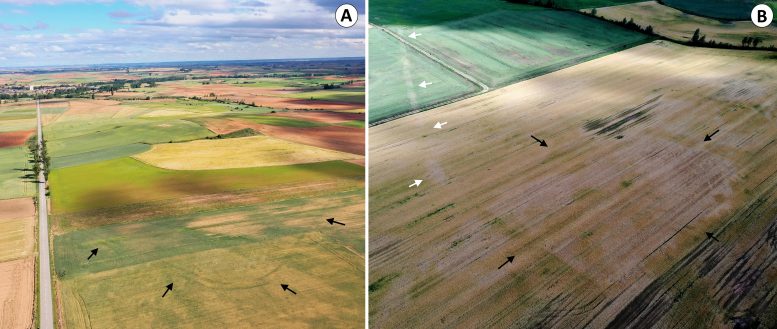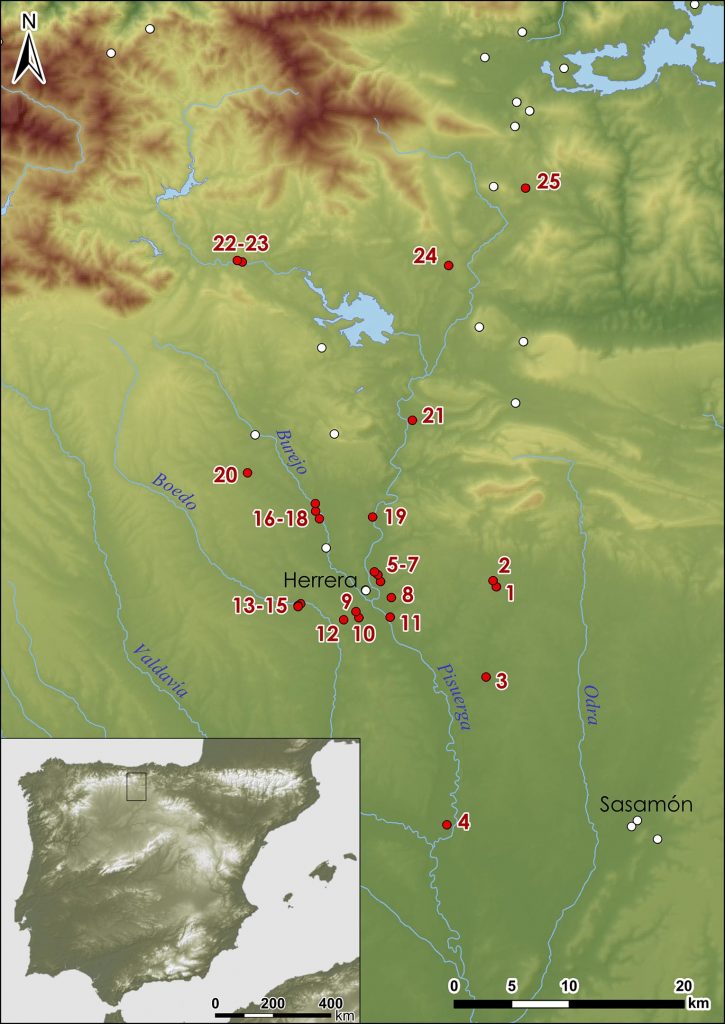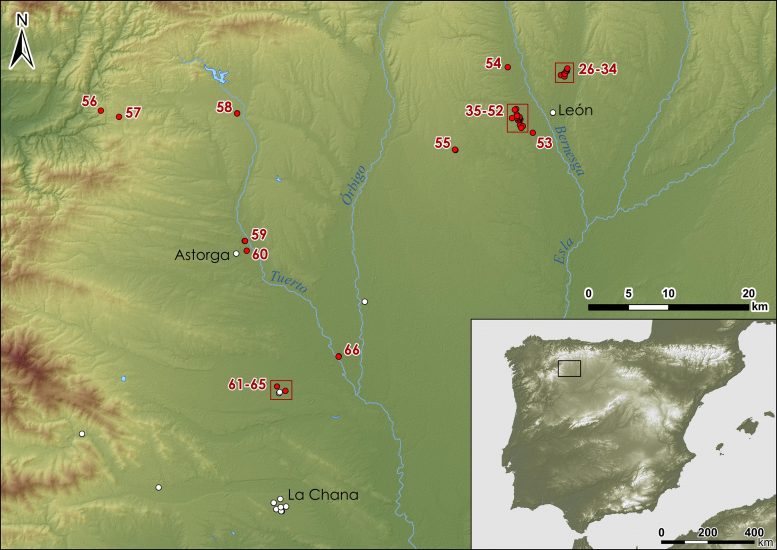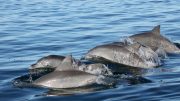The discovery of dozens of new Roman Army sites thanks to remote sensing technology has revealed more about one of the empire’s most infamous conflicts.
Analysis of the 66 camps shows the Roman army had a larger presence in the region than previously thought during the 200-year battle to conquer the Iberian Peninsula.
The discovery of camps of different sizes — used for training and shelter — has allowed experts to map how soldiers attacked indigenous groups from different directions and to learn more about the footprint of the Roman military presence in the northern fringe of the River Duero basin — the León, Palencia, Burgos and Cantabria provinces.
Experts analyzed aerial photography and satellite images, created three-dimensional models of the terrain from LiDAR data and used drones to create detailed maps of the sites. This included resources from the Spanish National Geographic Institute (IGN) and geoportals such as Google Earth or Bing Maps. Pinpointing locations allowed fieldwork to then take place.
These temporary occupations usually left fragile and subtle traces on the surface. The ditches or the earth and stone ramparts protecting these fortifications have been filled in and flattened. Combining different remote sensing images and fieldwork shows the perimeter shape of the temporary Roman military camps, often a rectangle like a playing card.
These new sites are located at the foothills of the Cantabrian Mountains, where the conflict between Romans and natives was focused at the end of the 1st century BC. This suggests soldiers crossed between lowlands and uplands, using ridges in the mountains to stay out of site and give themselves more protection.
The fact there were so many army camps in the region shows the immense logistical support which allowed soldiers to conquer the area. Sites were used to aid movement to remote locations and to help soldiers stay in the area over the cold winter months. Some of the camps may have housed soldiers for weeks or months, and overs overnight.
The aim of the occupation was to expand the empire and to be able to exploit natural resources such as tin and gold.

Aerial photographs of the camp of Tortolondro (black) (A), the Roman road (white) and the camp (black) at Quintanilla de Riofresno. Credit: romanarmy.eu
The research, published in the journal Geosciences, was carried out by Andrés Menéndez Blanco, Jesús García Sánchez from the Archaeology Institute of Mérida, José Manuel Costa-García and Víctor Vicente García from the University of Santiago de Compostela, João Fonte from the University of Exeter and David González-Álvarez from the Institute of Heritage Sciences, Spanish National Research Council.
Dr. Fonte said: “We have identified so many sites because we used different types of remote sensing. Airborne laser scanning gave good results for some sites in more remote places because it showed earthworks really well. Aerial photography worked better in lowland areas for the detection of cropmarks.”
“The remains are of the temporary camps that the Roman army set up when moving through hostile territory or when carrying out maneuvers around their permanent bases. They reveal the intense Roman activity at the entrance to the Cantabrian Mountains during the last phase of the Roman conquest of Hispania.”
There is an important concentration of 25 sites along the valleys of northern Palencia and Burgos, as well as southern Cantabria. In the province of León, as many as 41 sites have been documented in different valleys. These range from small forts of a few hundred square meters to large fortified enclosures of 15 hectares.
Most of these Roman military sites were located in close proximity to later important Roman towns. Sasamón, a village in Burgos that was probably where nearby the Emperor Augusto established his camp during his presence in the front.
The research will continue so experts can examine the relationships the Romans established with indigenous communities, named Vaccaei, Turmogi, Cantabri, Astures, and Callaeci, according to the Greek and Latin sources.
The team is currently developing a project to catalog and document all the Roman camps in the province of León by means of drones, in order to gain a better understanding of their structures or the evolution of their state of conservation. Work is also continuing in Burgos and in Sasamón, including a study of the Cerro de Castarreño settlement and its conquest in the 1st century BC.
Reference: “Following the Roman Army between the Southern Foothills of the Cantabrian Mountains and the Northern Plains of Castile and León (North of Spain): Archaeological Applications of Remote Sensing and Geospatial Tools” by Andrés Menéndez Blanco, Jesús García Sánchez, José Manuel Costa-García, João Fonte, David González-Álvarez and Víctor Vicente García, 2 December 2020, Geosciences.
DOI: 10.3390/geosciences10120485
The findings have been shared with cultural and heritage organizations so they can be protected in future.











“The discovery of dozens of new Roman Army sites … has revealed more about one of the empire’s most infamous conflicts.”
How does this “infamous conflict” differ from any of the other ‘conflicts’ characteristic of the expansion of the Roman Empire throughout the known world?
What a nothing burger. Hard to believe this article was written by someone with a university education, or edited by anyone. It doesn’t disclose when this campaign was waged or by whom, the number of soldiers involved, or why the conflict is “infamous.” It doesn’t disclose what was actually learned that wasn’t already well-known to scholars. It’s like, “Gee whiz, what will they think of next for drones?” It appears the study’s main accomplishment will be to give antiquities looters a better idea of where to prospect.
Notes to copy editor:
“during the 200-year battle to conquer the Iberian Peninsula.” [Battles don’t last 200 years. Wars do.]
“using ridges in the mountains to stay out of site” [out of sight]
“‘during the last phase of the Roman conquest of Hispania.’” [Hispania is not in my dictionary; it is the Roman name for the Iberian peninsula.]
“Most of these Roman military sites were located in close proximity of” [close proximity is redundant, “proximity to” is correct usage; in any case, “located near” would get it done.]
“where nearby the Emperor Augusto established his camp during his presence” [Emperor Augustus? — obviously he was present when he established his camp]
Spike it!